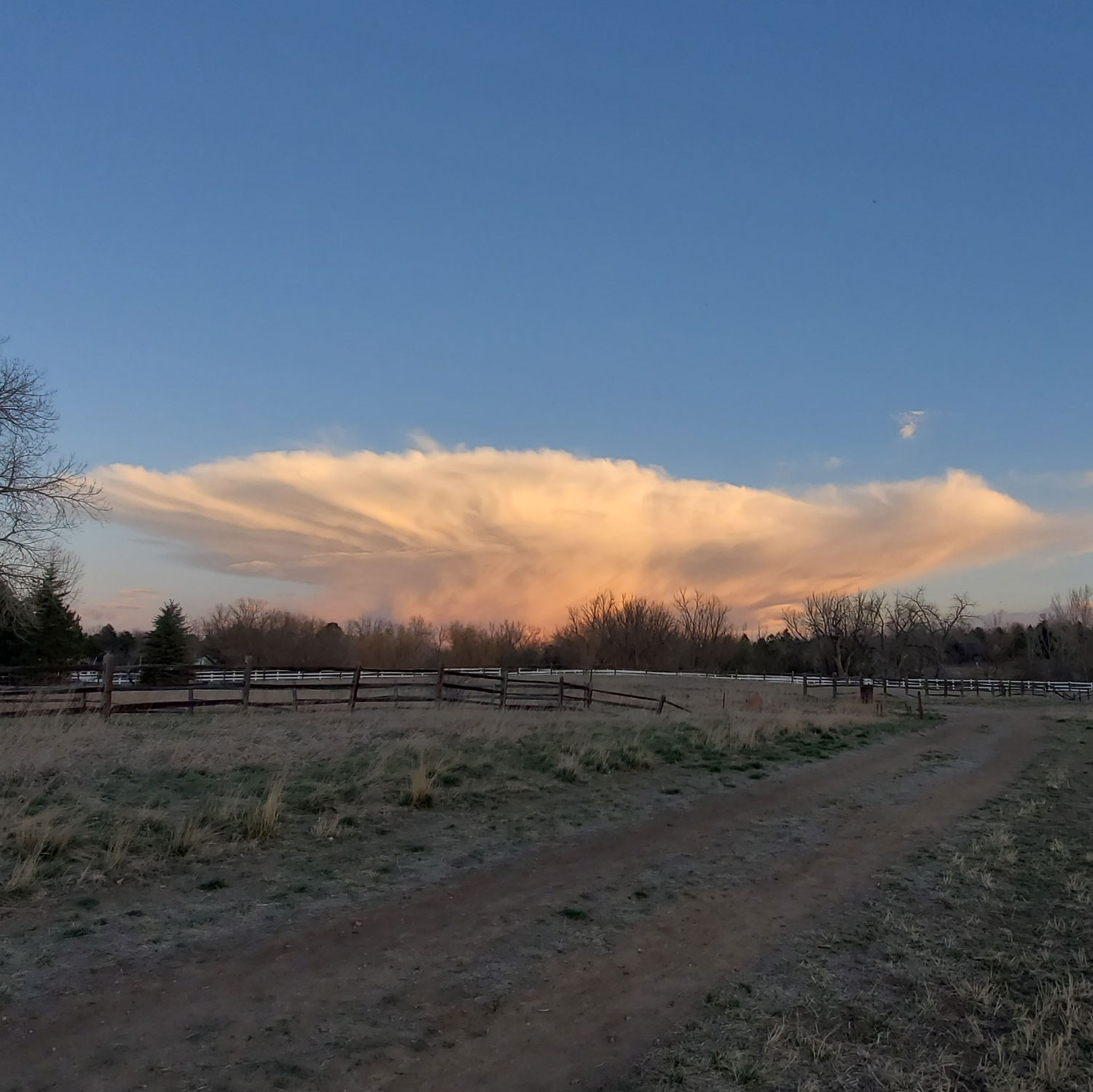Julie Parker may be a new member of the Cloud Appreciation Society (Member 64,856), but she and her daughter have long shared an appreciation of the skies above their home in Littleton, Colorado, US. During an evening dog walk, they spotted this Cumulonimbus capillatus incus cloud as it took on the soft colours of sunset in an otherwise clear blue sky.
Do you see the indistinct edges and hair-like texture in the upper portion of Julie and her daughter’s cloud? This identifies this Cumulonimbus storm cloud as the species capillatus, from the Latin for ‘having hair’. The appearance suggests the whole upper region of the Cumulonimbus has glaciated – meaning all the droplets up there have frozen into ice crystals. This indicates the storm has reached its mature stage. The cloud’s distinctive shape results from it having grown so tall – reaching up to altitudes of maybe 8-10 miles (13-16 km). It has extended up to a part of the atmosphere called the tropopause, where the temperature profile acts as a ceiling on the growth of clouds. Beneath this invisible lid, the storm cloud can only spread outwards in this way, a shape known as an incus, Latin for a blacksmith’s ‘anvil’.
Julie tells us that the nearby Mt. Evans has recently been renamed Mt. Blue Sky. Colorado may have plenty of blue skies, but as cloudspotters, we do like to see the blue punctuated, every now and then, by a hairy anvil storm.



